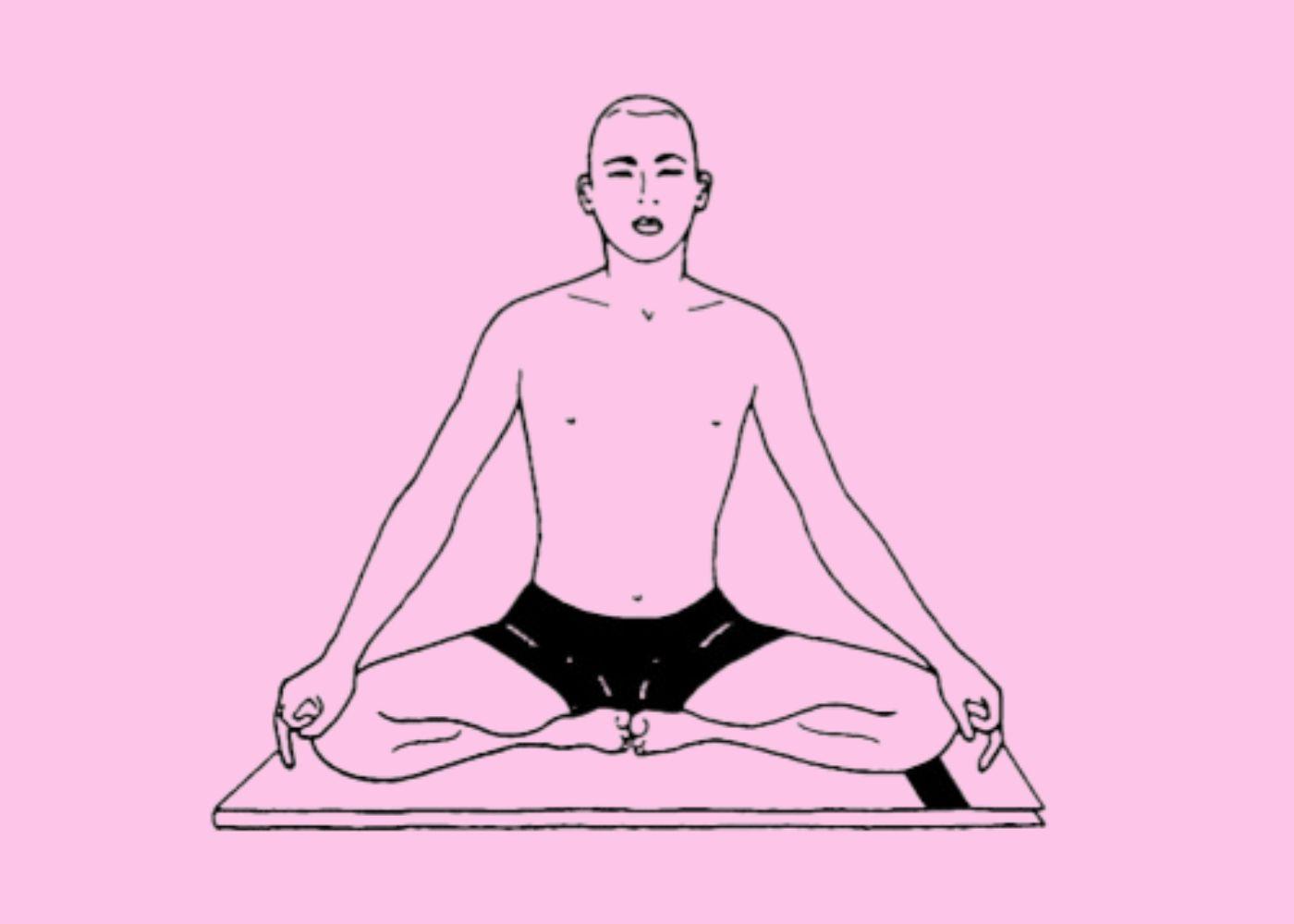Moolabandhasana (Perineal Contraction Pose) Practice, Benefits and Precautuions
The Perineal Contraction Pose, or Moolabandhasana, is a potent and transformational yoga pose that centers on rooting and focusing the energy or “Moola” found in the pelvic region. This modest yet powerful bandha (lock) opens doors to deeper spiritual and physical advantages. It’s more than just a physical position. We will discuss how to perform Moolabandhasana, its many advantages, and important safety measures in this blog.
How to Practice Moolabandhasana (Perineal Contraction Pose)
Preparation:
Make sure that you are proficient with fundamental yoga positions and breathing exercises before attempting Moolabandhasana. It is beneficial to have a basic understanding of yoga and to practise consistently. Here’s a detailed how-to:
Step-by-Step Guide:
1. Initial Position:
- Take a comfortable cross-legged pose, like the lotus pose (Padmasana) or sukhasana (easy pose). Make sure your chin is parallel to the floor, shoulders are relaxed, and your spine is straight.
2. Focus on the Breath:
- To calm your thoughts, close your eyes and inhale deeply a few times.
- Allow your breathing to be rhythmic and natural.
3. Locate the Moola:
- The perineal region, or space between the genitalia and the anus, is referred to as the “Moola.” It is situated between the vagina and the anus in women and between the scrotum and the anus in men.
4. Engage the Bandha:
- Take a deep breath. Contract your perineal muscles softly as you release the breath. It’s a mild contraction, like when you try to stop peeing.
- Hold the contraction without straining for a few seconds. Hold the lock in place while breathing normally.
6. Release:
- Exhale slowly to let go of the contraction. Take a moment to relax and notice any changes in your energy levels or sensations.
7 Repeat:
- Continue this contraction and release technique for five to ten minutes, extending the time as you get more at ease.
Integration with Asanas and Pranayama:
Although Moolabandhasana can be done alone, its benefits can be increased when combined with other asanas and pranayama (breathing exercises). For example, you can incorporate it into poses like Sarvangasana (Shoulder Stand) or use it when doing Alternate Nostril Breathing, or Nadi Shodhana.
Benefits of Moolabandhasana (Perineal Contraction Pose)
Physical Benefits:
1. Strengthens Pelvic Floor:
- Consistent practice improves sexual health and helps avoid urine incontinence by toning and strengthening the pelvic floor muscles.
2. Improves Digestion:
- By stimulating the abdominal organs, the contraction improves digestive processes and eases conditions like constipation.
3. Enhances Circulation:
- It encourages improved pelvic blood circulation, which nourishes the reproductive organs and enhances general vigour.
Mental and Emotional Benefits:
1. Reduces Stress:
- The technique balances the root chakra (Muladhara Chakra), which quiets the mind and aids in lowering tension and anxiety.
2. Heightens Awareness:
- Moolabandhasana promotes awareness of one’s internal energy dynamics and mindfulness.
Spiritual Benefits:
1. Awakens Kundalini Energy:
- It is thought to promote spiritual awakening by igniting and guiding the latent Kundalini energy upward through the spine.
2. Balances Chakras:
- It assists in balancing and grounding the other chakras (energy centres) in the body by activating the root chakra.
Precautions
1. Pregnancy and Menstruation:
- Women who are menstrual or pregnant should refrain from performing Moolabandhasana. The contraction may cause disruptions to the body’s normal functions that take place at certain periods.
2. Medical Conditions:
- Before undertaking this technique, those with major medical disorders relating to the pelvic region, such as rectal prolapse, severe pelvic discomfort, or other conditions, should speak with a healthcare provider.
3. Begin Slowly:
- Start with shorter holds if you are new to moolabandhasana in order to prevent overstretching your pelvic muscles. As your strength and comfort level rise, gradually extend the duration.
4. Proper Guidance:
- It is usually advantageous to study Moolabandhasana under the supervision of a qualified yoga instructor in order to guarantee proper form and reduce the possibility of injury.
Join yoga in rishikesh
A profound yoga pose that combines the mental, physical, and spiritual parts of yoga is called moolabandhasana. By adding this age-old method to your daily practice, you can access an energy source and enjoy increased awareness and well-being. Recall that, similar to any other
Learn to know more about the perineal contraction pose so you can visit the best yoga school in India and join 200 hour yoga teacher training in India and 300 hour yoga teacher training in india




